Microsoft OneDrive is deeply integrated into Windows 11, offering seamless cloud storage and synchronization. However, you might prefer not to use it due to personal preferences, privacy concerns, or because you use alternative cloud services. This guide provides several methods to disable OneDrive on your Windows 11 PC.
Uninstall OneDrive
If you want to completely remove OneDrive from your system, uninstalling it via the Settings app is the most direct method.
Step 1: Open the Settings app by pressing Windows + I, then select 'Apps' from the left-hand menu.

Step 2: In the 'Apps' section, click on 'Installed apps' located on the right pane.
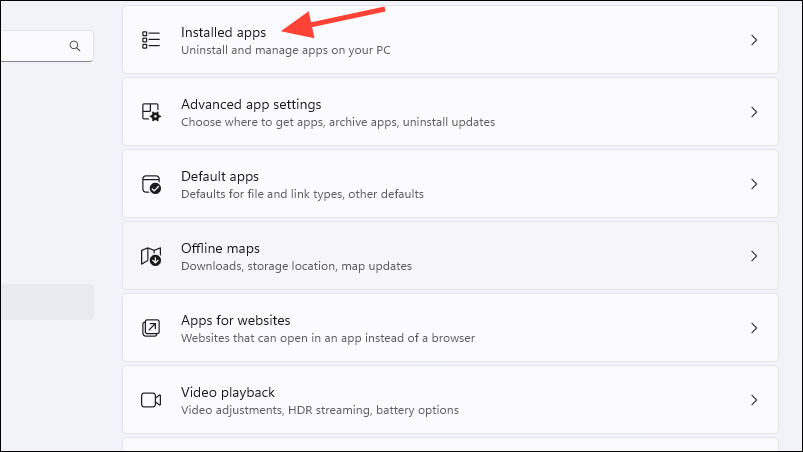
Step 3: Scroll through the list of installed apps to find 'Microsoft OneDrive'. Click on the three-dot menu icon next to it.
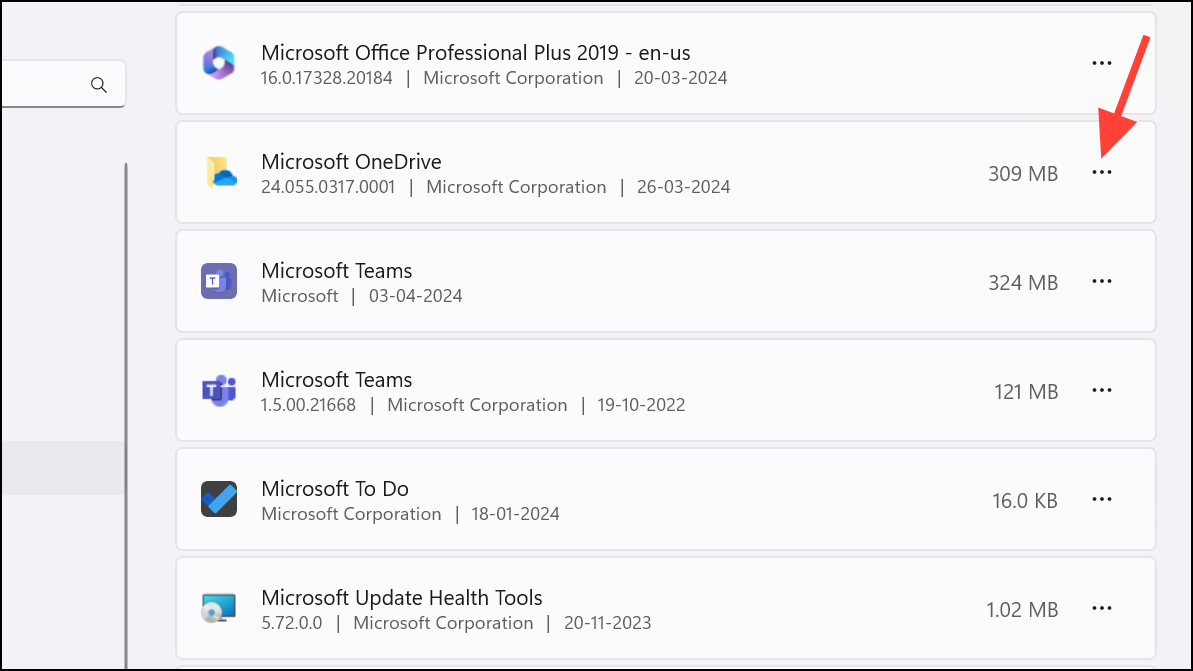
Step 4: From the dropdown menu, select 'Uninstall'.
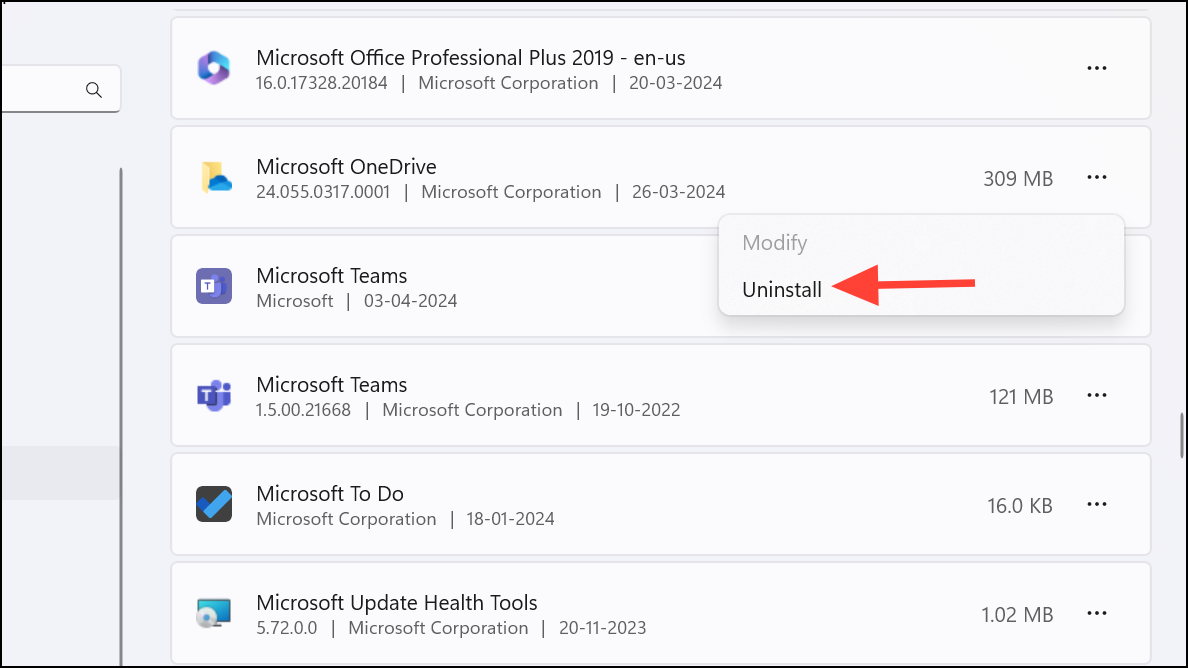
Step 5: In the confirmation dialog that appears, click 'Uninstall' to confirm that you want to remove OneDrive from your system.
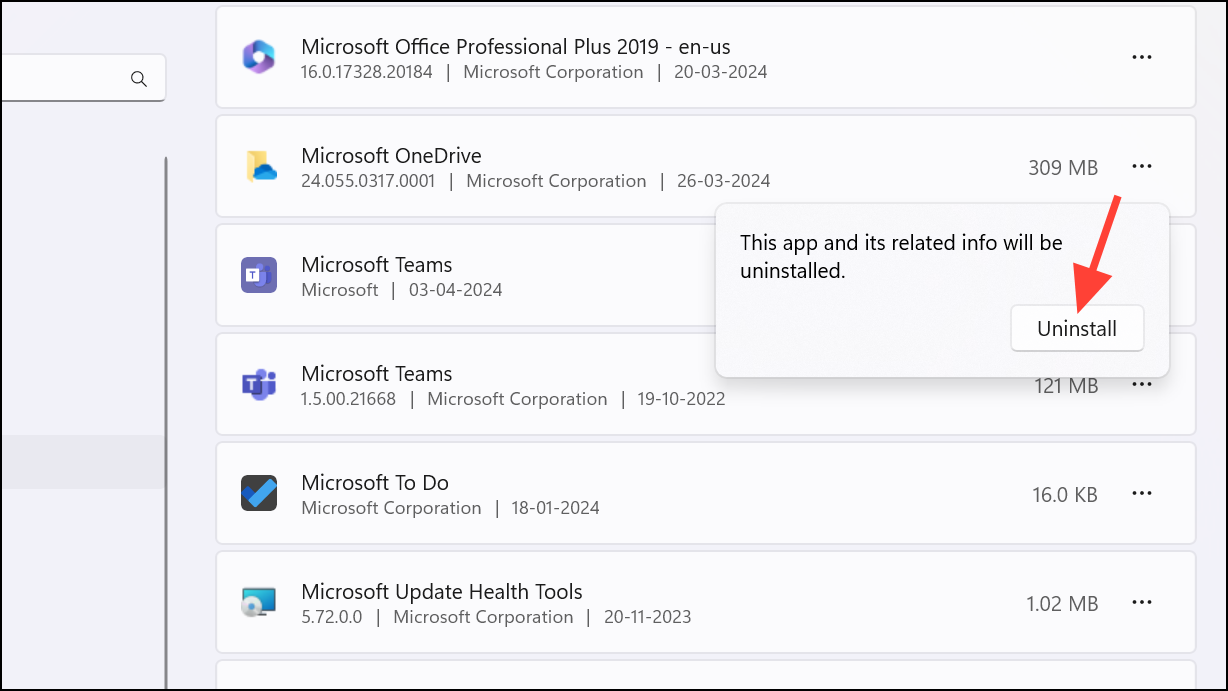
If you decide to use OneDrive again in the future, you can reinstall it by searching for 'OneDrive' in the Microsoft Store and downloading it from there.
Unlink OneDrive
If you don't want to uninstall OneDrive completely but wish to disconnect your account, you can unlink your PC. This stops file synchronization without removing the application.
Step 1: Click the 'OneDrive' icon in the system tray at the bottom-right corner of your screen. If you don't see it, click the '^' arrow to reveal hidden icons.
Step 2: In the OneDrive window that appears, click the 'Settings' gear icon and select 'Settings' from the dropdown menu.

Step 3: In the OneDrive Settings window, navigate to the 'Account' tab on the left side.

Step 4: Click on 'Unlink this PC' to disconnect your account from OneDrive.

Step 5: In the confirmation dialog, click 'Unlink account' to proceed.

After unlinking, your OneDrive account will be disconnected from your PC. Your files will no longer sync between your computer and the cloud, even if the OneDrive app is running. To ensure OneDrive doesn't run or consume system resources, you can quit the app and prevent it from starting automatically at boot, as described below.
Disable OneDrive
To disable OneDrive without uninstalling it or unlinking your account, you can quit the app and stop it from launching at startup. This method allows for easy reactivation if you decide to use OneDrive again later.
Step 1: Click the 'OneDrive' icon in the system tray, then click the 'Settings' gear icon in the OneDrive window.

Step 2: Hover over 'Pause syncing' to reveal more options.

Step 3: From the expanded menu, select 'Quit OneDrive'.

Step 4: In the confirmation dialog that appears, click 'Quit OneDrive' to confirm.

OneDrive will now be closed, and all syncing activities will stop until you launch the app again.
Step 5: To prevent OneDrive from starting automatically, open the Settings app by pressing Windows + I, then select 'Apps' from the left-hand menu.

Step 6: In the 'Apps' section, click on 'Startup' from the right pane.

Step 7: Scroll through the list or use the search bar to find 'Microsoft OneDrive'. Toggle the switch next to it to turn it off.
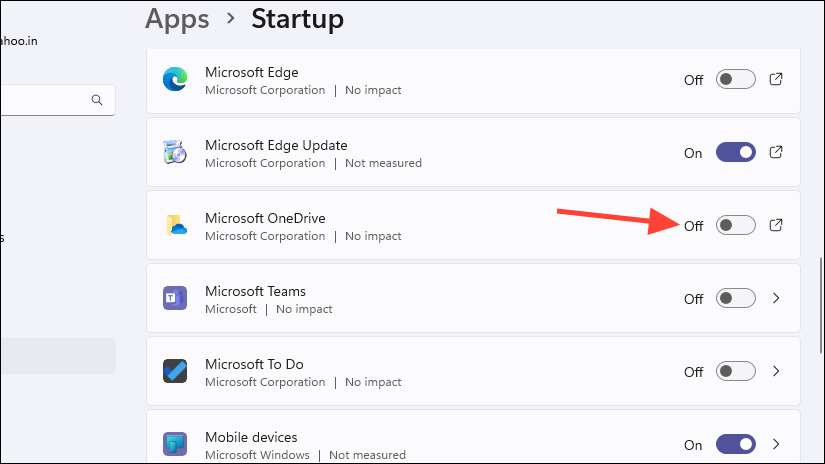
OneDrive will no longer launch automatically when you start your computer, and it will remain disabled unless you manually open the app.
Hide OneDrive from File Explorer
If you wish to remove the OneDrive folder from the File Explorer sidebar, you can hide it to keep your navigation pane uncluttered.
Step 1: Open File Explorer by pressing Windows + E on your keyboard.
Step 2: In the navigation pane, right-click on 'OneDrive' and select 'Properties' from the context menu.

Step 3: In the 'General' tab of the Properties window, check the box labeled 'Hidden' and click 'Apply'.

Step 4: In the confirmation dialog that appears, select 'OK' to confirm hiding the folder.

Pause OneDrive
If you want to temporarily stop OneDrive from syncing your files without disabling or uninstalling it, you can pause syncing for a set period.
Step 1: Click the '^' arrow in the system tray at the bottom-right corner of your screen to reveal hidden icons, then click the 'OneDrive' icon. If the icon isn't visible, you may need to launch OneDrive manually.

Step 2: In the OneDrive window, click the 'Settings' gear icon.

Step 3: Hover over 'Pause syncing' to expand the options.

Step 4: Choose the duration you wish to pause syncing for: 2 hours, 8 hours, or 24 hours.

OneDrive will now pause syncing for the selected duration. After this time, it will automatically resume syncing your files.
By following these methods, you can effectively disable OneDrive on your Windows 11 PC according to your preferences. Whether you choose to uninstall, unlink, disable, or pause the app, each option offers a way to manage OneDrive's presence on your system.








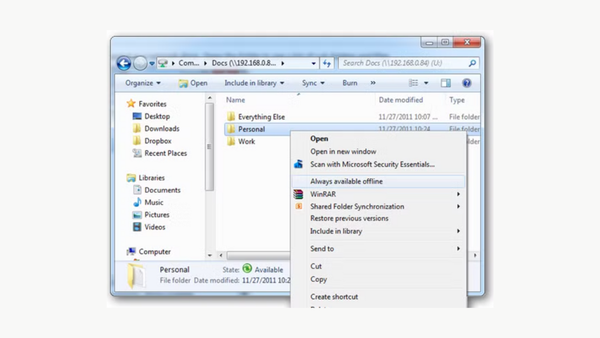

Member discussion